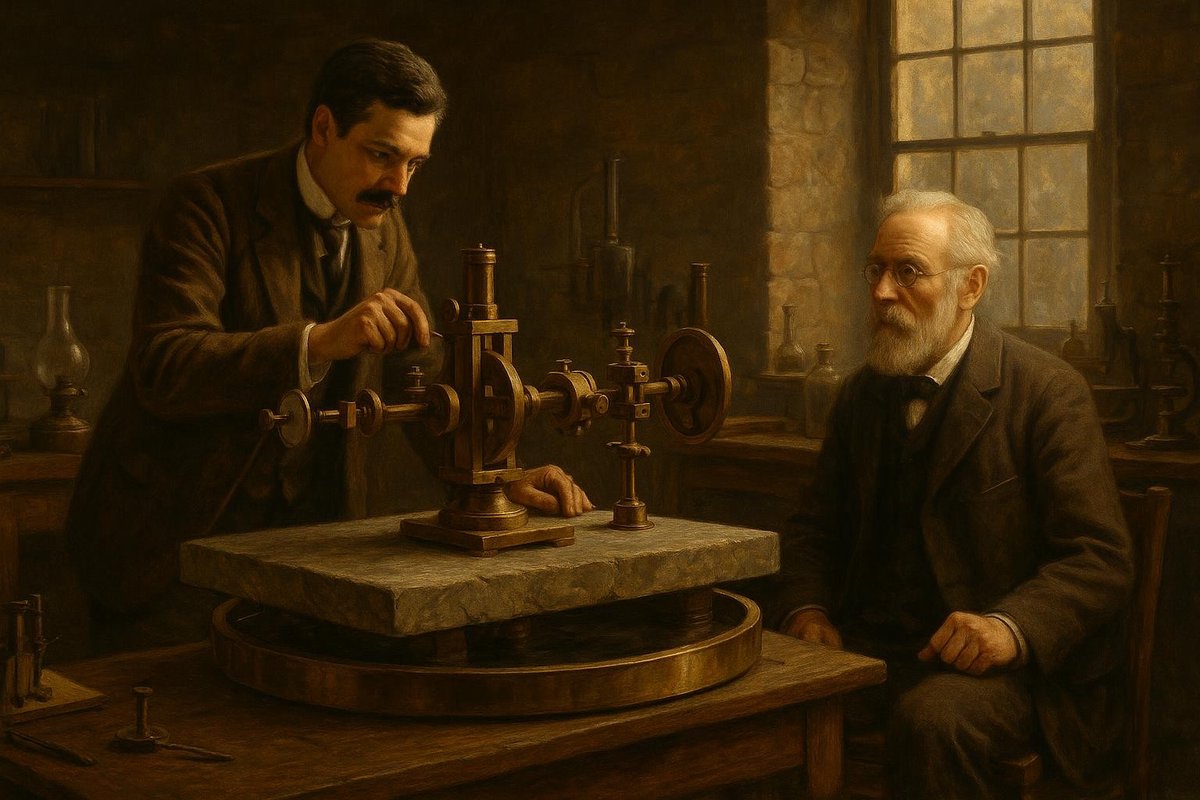
Unpacking the Question: What Were They Really Looking For?
Why did Albert Michelson and Edward Morley decide to scrutinize the very fabric of the universe? It’s not as straightforward as it seems. During the late 19th century, the concept of ‘luminiferous ether’ was the prevailing explanation for how light waves traveled through space — much like sound waves travel through air. But here’s the kicker: if ether existed, the Earth moving through it should create a detectable ‘ether wind’.
- Imagine ether as a cosmic ocean; as Earth sails through it, there should be a ripple effect.
- The faster you move through this ‘ocean’, the more significant the ripple — a theory that seemed logical, yet was unproven.
But the question begged for more than just theoretical musings. It needed concrete evidence, and Michelson and Morley were ready to find it. This wasn’t just an academic exercise; it was a quest to understand the fundamental workings of the universe, to grasp the unseen threads weaving the cosmos together.
Surprising Facts: The Trials and Tribulations of Experimentation
Before the breakthrough, there was plenty of trial and error. Michelson, a German-American physicist, and Morley, a seasoned chemist, were both seasoned in their fields but far from infallible. Their initial attempts to detect the elusive ether were fraught with challenges.
- They first tried a simpler version of their experiment in 1881, which yielded inconclusive results due to insufficient sensitivity.
- Their apparatus was a masterpiece of precision engineering for its time — a massive stone slab floating in a pool of mercury, allowing it to rotate freely.
- Despite their best efforts, the ‘ether wind’ remained undetectable, defying their expectations and causing some scientific head-scratching.
Interestingly, these failures didn’t deter them. Instead, they refined their approach, making their equipment more sensitive and accurate. They were determined to solve this cosmic puzzle, as the stakes were nothing less than the very nature of light itself.
What Science Says: The Experiment’s Stunning Revelation
By 1887, Michelson and Morley were ready for another attempt. They meticulously prepared their interferometer, an ingenious device designed to split a beam of light and send it along two different paths. If ether existed, the light beams would take different times to return, revealing the sought-after ‘ether wind’.
- They conducted the experiment at Case Western Reserve University, meticulously measuring the interference patterns of light.
- To their astonishment, the expected shifts didn’t occur, suggesting that light’s speed remained constant regardless of Earth’s motion — an unexpected result.
- This was a seismic shift in scientific thinking, contradicting the ether theory and paving the way for new interpretations of physics.
The experiment is often hailed as a turning point in the history of science. It helped set the stage for Einstein’s theory of relativity, fundamentally altering our understanding of space and time. Michelson and Morley’s persistence proved that even failures can illuminate the path to discovery.
What It Means for Us: The Experiment’s Legacy
The Michelson-Morley experiment did more than just disprove ether; it became a cornerstone of modern physics. By demonstrating the constancy of light’s speed, it challenged scientists to reconsider the very nature of reality.
- Their work paved the way for Einstein’s theory of special relativity, which redefined concepts of time and space.
- It sparked debates and discussions, pushing scientists to explore beyond the limits of conventional physics.
- The experiment underscored the importance of empirical evidence in refining or discarding prevailing theories.
Beyond physics, the experiment serves as a reminder that sometimes asking the right question is more important than finding the expected answer. It embodies the spirit of scientific inquiry — a relentless pursuit of truth that encourages us all to keep questioning, experimenting, and exploring the unknown.
Fuel Someone Else’s Curiosity
Feel inspired by this tale of curiosity and discovery? Share this story of the Michelson-Morley experiment and ignite someone else’s passion for science. Discuss the implications over coffee or spark a debate on the true nature of reality. After all, in the world of science, one question answered often leads to many more. Let’s keep the conversation going!

Leave a Reply